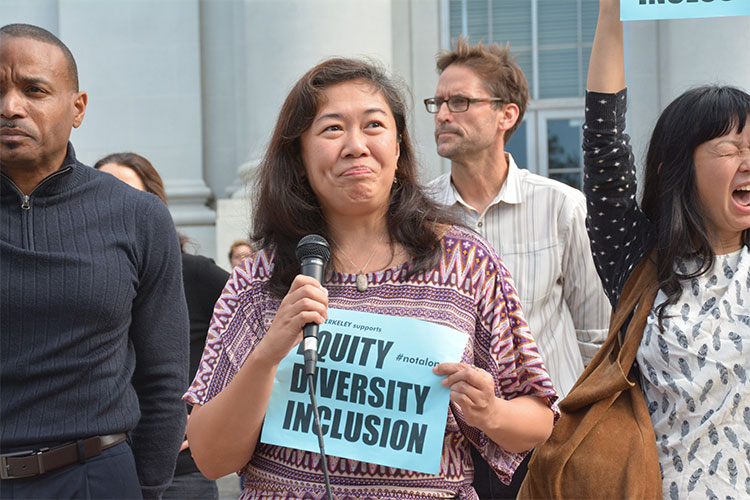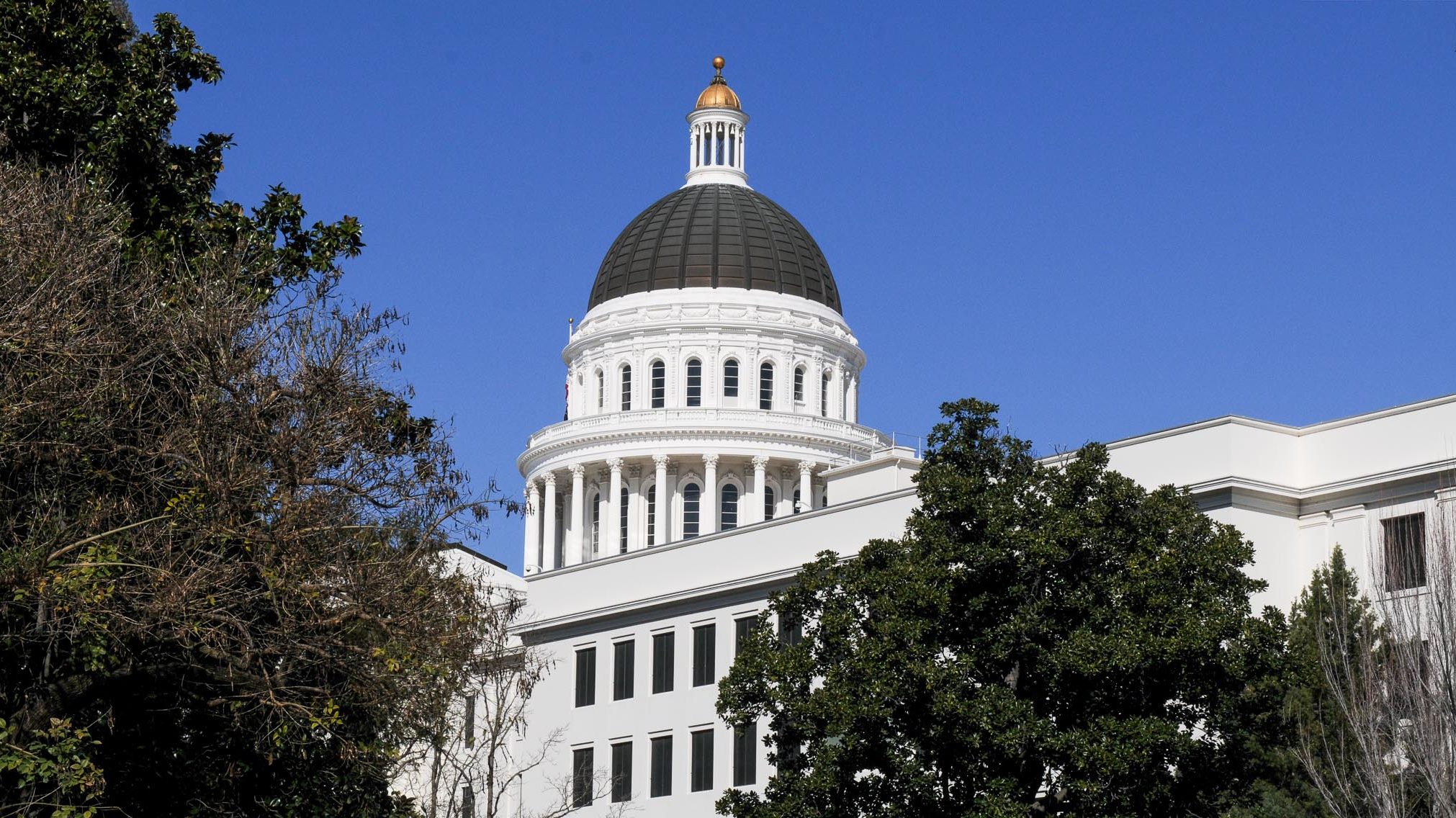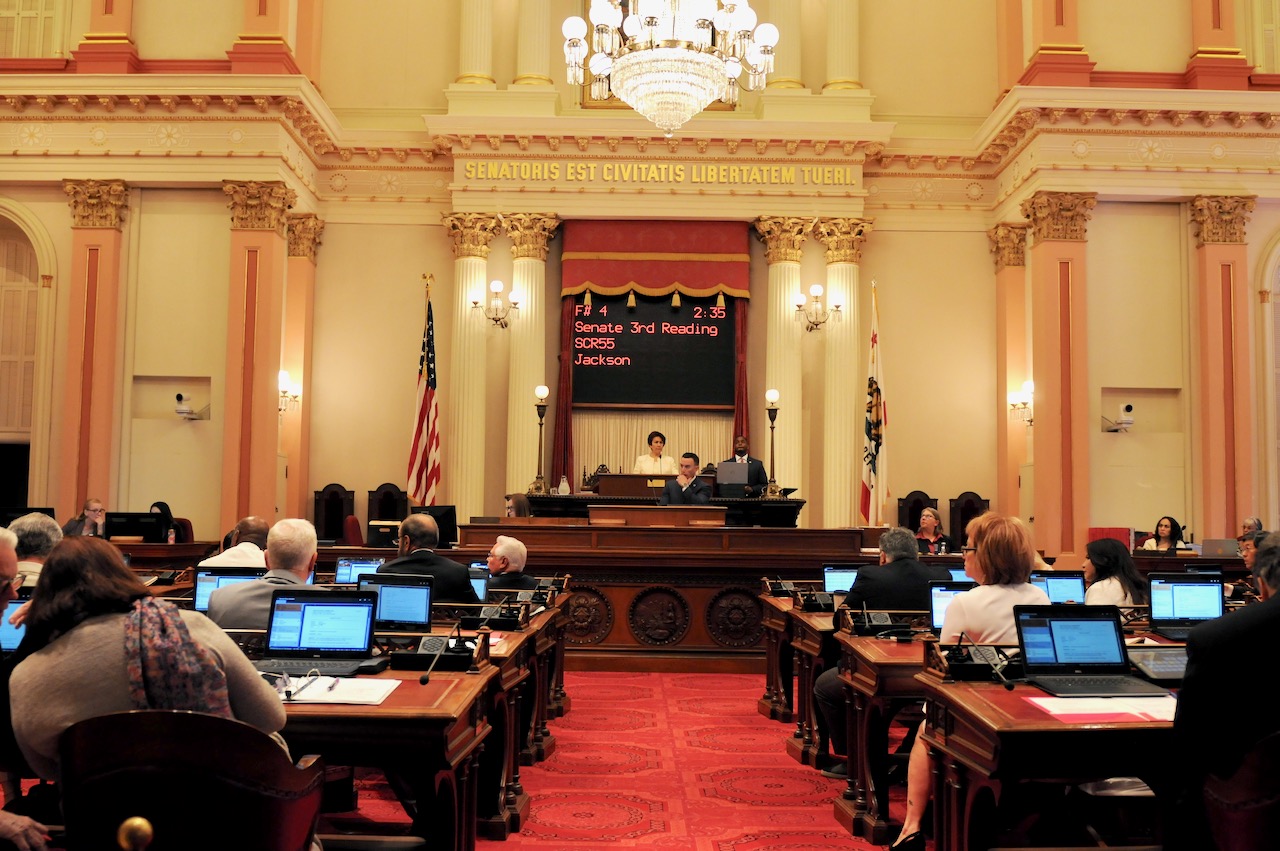
Office of Diversity, Equity, Inclusion and Belonging (DEIB). (Photo: https://news.berkeley.edu/2016/11/10/affirmation-rally-for-diversity-equity-and-inclusion-fills-sproul-plaza/)
Is DEI Ready To DIE?
‘The diversity industry is built on sand’
By Martin Marks, January 4, 2025 2:55 am
While it’s hard to pinpoint exactly when the term Diversity Equity and Inclusion (DEI) became a specific term in the American lexicon, we can certainly trace the beginnings of its concepts to the middle part of the 20th century. In 1961 as the nation’s Civil Rights movement pressed ahead, President John F. Kennedy signed Executive Order 10925 that established the President’s Committee on Equal Employment Opportunity and where the phrase Affirmative Action became a legally recognized term. In it, EO 10925 provided that,
“…government contractors take affirmative action to ensure that applicants are employed, and employees are treated fairly during employment, without regard to their race, creed, color, or national origin”.
From there the Civil Rights movement gathered steam and culminated with the signing of the Civil Rights Act of 1964, a landmark piece of legislation adopted in one of the more tumultuous times for our nation. The floor manager of the bill was then Senator Hubert Humphrey (D-MN) who soon would become Vice President with the election of Lyndon Johnson in November 1964. In reaction to opponents of the bill, Humphrey famously declared that the bill “would prohibit preferential treatment for any particular group” and added, “I will eat my hat if this leads to racial quotas.”
Of course, what followed were numerous landmark lawsuits, many decided at the United States Supreme Court that negotiated the legal and political mine fields of discrimination, reverse discrimination, and the allegations of the very racial quotas that Senator Humphrey pitted his (arguably unusual) next meal against. Pass the ketchup, anyone?
Yet affirmative action policy persisted and blossomed into what is now commonly accepted as DEI as a means to not just break down barriers initiated by previous bias and discrimination but also to create an equality of outcome rather than opportunity for the ever-growing number of what are deemed marginalized groups. But it has without a doubt become so much more than that.
In 2019, Time Magazine wrote that with the emergence of movements such as #metoo and Black Lives Matter, DEI had exploded into a booming multibillion dollar per year “industry.” Creation of DEI departments led and staffed by diversity professionals in government, business, and academia became the norm and the concomitant spending on same skyrocketed. According to McKinsey & Company, a multinational consulting firm based in New York, spending on “DEI-related efforts” worldwide totaled $7.5 billion in 2020. If trends continue, that figure will exceed $15 billion by 2026. The numbers are likely much higher.
As early as 2003, Thomas Kochan, a professor at MIT’s Sloan School of Management and one of the nation’s most respected human resources management scholars noted that, at that time private companies alone were spending an estimated $8 billion per year on diversity initiatives.
A 2023 Pew Research study showed that 52% of Americans are subject to some type of required DEI program in the workplace.
Other than making government, taxpayers, corporations, small businesses, schools, etc. feel good about themselves for making these “investments,” just how successful have DEI programs been in achieving their purported goals? Well, that depends upon whom you ask, and is very much open to (continued) debate.
While spending on DEI personnel and programs has flourished, DEI itself has fallen short. People of Color (POC) while now estimated to make up 40% of the U.S. population continue to lag in their representation in numerous influential fields and positions. The ultimate cause or causes for that are certainly also up for debate. Further, DEI programs, initiatives, and policies have been targeted for suppressing free speech, ramping up the costs of education and of doing business and most definitely fanning the flames of out-of-control government spending. Too, DEI initiatives have been implicated in diverting time and resources away from other critical workplace and academic endeavors. Finally, the late Senator Humphrey’s guarantees notwithstanding, DEI has led to de facto quota systems for heretofore underrepresented groups with corresponding accusations of reverse discrimination resulting in costly and continuing lawsuits.
The pushback has been ongoing, and in some cases from origins you would not normally expect.
State laws have weighed in on the matter of preferences. In California, where reliably blue voters can be counted on, Proposition 209 in 1996 was adopted in landslide proportions (55-45%) as the first in the nation ban on the use of racial preferences. Prop 209 amended the state constitution to prohibit state governmental institutions from considering race, sex, or ethnicity, in the areas of public employment, public contracting, and public education. An effort to overturn Prop 209 was presented to California voters in 2020 with Proposition 16 and was resoundingly defeated by an even greater margin (57-42%).
In June of 2023, The United States Supreme Court ruled that the use of racial preferences in the university admissions process is unconstitutional using the Equal Protection Clause of the 14th Amendment as the basis for their decision. In spite of this SCOTUS decision and in direct contradiction to Golden State voters, California Democrat legislators continue to push their DEI agenda. Assembly Constitutional Amendment 7 (ACA 7) attempts to amend the California State Constitution and would grant the Governor the authority to make “special exceptions” to the prohibition on racial preferences. In June 2024 the sponsors of ACA 7 put a halt to the process that would have placed the referendum on the November ballot citing a complex docket of other referenda already on the ballot that might have jeopardized ACA 7’s success. It is once again California voters who would have to approve such an initiative at any point in the future. Despite their propensity to reflexively elect liberal politicians, California voters have already spoken quite loudly on the matter and are likely to reject any effort on an end-run against their will.
A recent published study from Network Contagion Research Institute (NCRI) and Rutgers University—hardly an academic bastion of the vast right-wing conspiracy, entitled “Instructing Animosity: How DEI Pedagogy Produces The Hostile Attribution Bias” shows that DEI can at times do more harm than good and is apt to be counterproductive to its stated goals. This fascinating study stated:
“The evidence presented in these studies reveals that while purporting to combat bias, some anti-oppressive DEI narratives can engender a hostile attribution bias and heighten racial suspicion, prejudicial attitudes, authoritarian policing, and support for punitive behaviors in the absence of evidence for a transgression deserving punishment,”
When exposed to oft-used DEI training materials such as the writings of controversial “anti-racist” authors Robin DiAngelo (White Fragility) and Ibram X. Kendi (How To Be An anti-Racist), that claim White Supremacy is the norm rather than the exception, NCRI research subjects developed a “hostile attribution bias” and were more likely to believe in punitive measures for offenders of so-called microaggressions even without evidence of such. This often leads to protesting people, calling for dismissal, demanding public apologies, etc. These punitive actions cost people their jobs and their reputations.
The study went on to claim that:
“DEI narratives that focus heavily on victimization and systemic oppression can foster unwarranted distrust and suspicions of institutions and alter subjective assessments of events.”
Citing multiple other studies on DEI, NCRI and Rutgers concluded:
“………some DEI programs appear to backfire.”
And while reports of this study were predictably found in media outlets such as Fox News and The New York Post, others such as The New York Times and Bloomberg News, while at first were ready to run with reporting on the study, ultimately cancelled their stories before publication, perhaps also for predictable reasons.
Getting back to Professor Kochan, he was most recently quoted in warning, “The diversity industry is built on sand. The business case rhetoric for diversity is simply naïve and overdone. There are no strong positive or negative effects of gender or racial diversity on business performance.”
There is an old saying that goes, “In America, every great cause begins as a movement and eventually degenerates into a racket.” That particular truism is certainly apt for the DEI industry.
With recent court rulings, enlightening independent studies, the results of the 2024 elections, and developing and prevailing public sentiment, DEI might not DIE in 2025, but certainly will face some significant and deserving headwinds.
- Vice President Vance Visits The Golden State - February 22, 2025
- Is DEI Ready To DIE? - January 4, 2025
- Just How Effective Was The Abortion Debate in The 2024 Election? - November 18, 2024





If your brain surgeon or airline pilot achieved their position as the result of DEI you may have a problem.
DEI is a new name for reverse racism practiced not only against “whites” but against the competent and intelligent. Putting entitled, corrupt idiots and fools in charge of everything is the Demonrats way of destroying the country. We are literally watching an attempt to create the Idiocracy. No wonder they hate the man who will undo everything they have done.
“Meritocracy” – That’s what built this country and that’s what we have to return too. DEI is used by politicians to distribute goodies in the form of taxpayer money to NGOs and supporters, while diluting the strength of our institutions. And we all know it. It started with the post office, then spread to the DMV, and schools and has now infected most of our institutions and corporations. Is it any wonder that respect for American institutions is at an all time low? And the lying and spin that goes with it! It’s necessary to issue fake statistics for employment, crime, homelessness, the border, inflation and every other issue to mask the many failings. In the end, no one benefits except the individuals in on the graft.
Great synopsis!
Let’s use a bit of comedy to drive a stake into the heart of this DEI …thing.
Mentioned in the comments were “Idiocracy”, a goofy movie that I could barely make it through years ago, because it was too dumb to watch (think “Dumb& Dumber”)
Now, it is almost a scholarly documentary on DEI. OBTW….look at those Crocs!
Next, is ……..” Am I a Racist” by Matt Walsh. This movie comes with an AMAZING cameo at the end with none other than Robin Di Angelo, using her own words against her.
I urge and challenge all of you to trick your liberal friends and neighbors into watching at least the Matt Walsh movie.